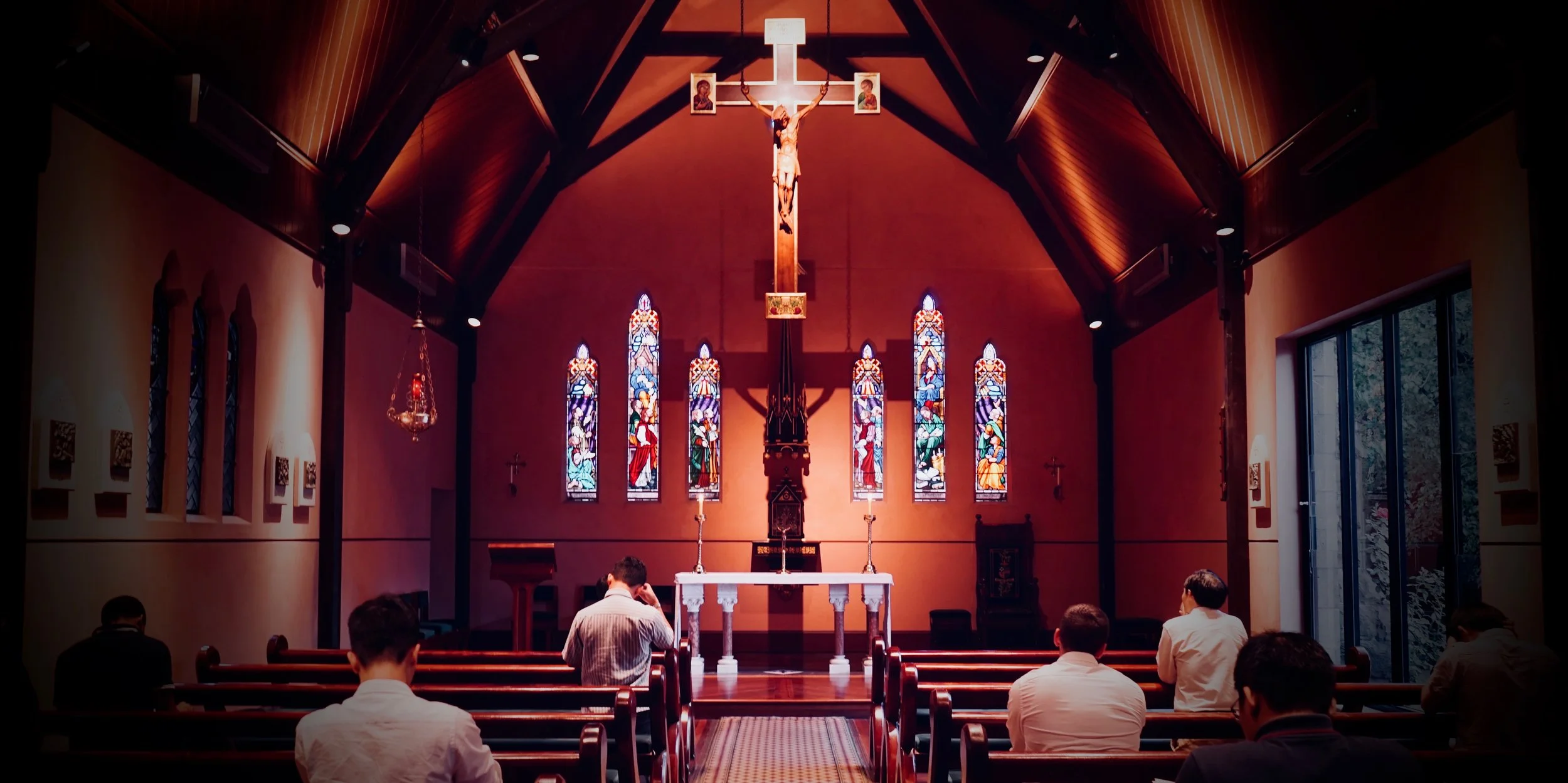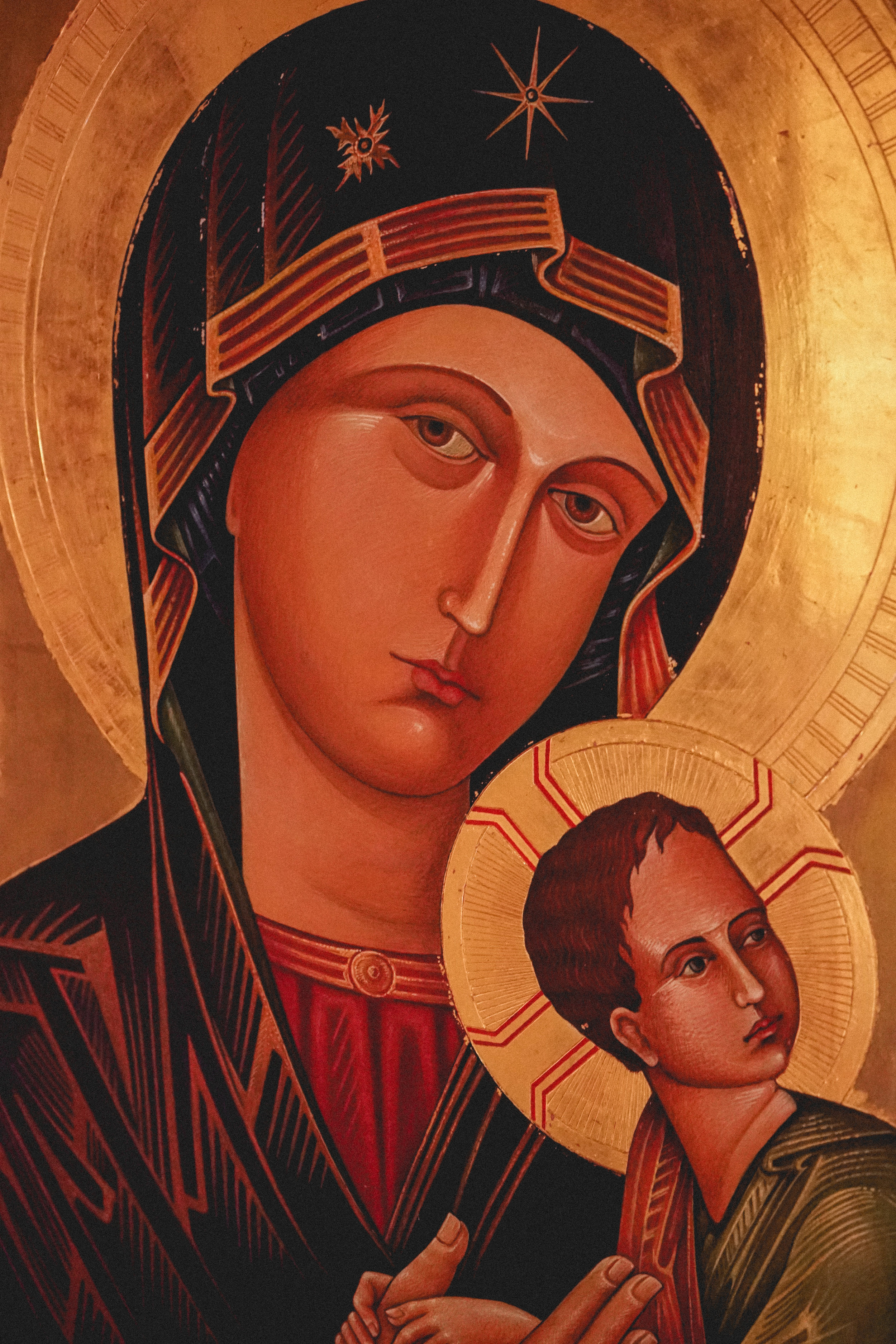The blue stone St Georges Church was built in 1855-6 to the design of architects George and Schneider. It is of historical significance as an early example of a building intended to take advantage of government funding for denominational schools. It is also of historical importance as a reflection of the expansion of Melbourne at the time and of the efforts of the Catholic church in the early 1850s to provide for Catholics outside the city area. The land bounded by Rathdowne, Pelham and Drummond Streets had been reserved in 1853 at the request of the Very Reverend Dr P B Geoghegan of the order of St Francis and permanently reserved in 1862. Originally consisting simply of a nave and tower, the transepts and apse were added in 1866 to an unknown design. Priests from St Francis Church in Lonsdale Street served from 1855 to 1881, when a separate parish of Carlton was formed.
The Presbytery is a fine, relatively intact and representative example of a presbytery building of the late nineteenth century, designed by prominent and distinguished architects Reed and Barnes in 1881 and constructed in 1882 by Carlton contractor George Richardson. Following the erection of St Georges Hall and Schoolroom in the south east corner of the site in 1883-4, it was decided in 1886 to erect a large new church with the older bluestone building reverting to its original use as a school.
“The seminary chapel is the most important space in the diocese. Here the seminarian learns to pray regularly, or at least consolidates his patterns of prayer in good times and bad, in times of enthusiasm and times of dryness. ”
These sentiments of the late Archbishop of Hobart, informed the refurbished design not only of the chapel, but the entire Carlton seminary. The fittings of the College were minimised to deliberately contrast with the more elaborate furnishing of the chapel and to emphasise the chapel’s importance and centrality to the life of the seminary. Most visitors agree that Corpus Christi Chapel is the most beautiful quarter of the seminary.
CHAPEL DEDICATION
“The dedication of a church, like baptism, confirmation and ordination, is a rite that is enacted only once. And just as these sacraments mark a new stage in the life of the Christian, so too the rite of dedication points to a new and characteristic moment in the life of a community, especially a seminary community. ”
After two years of restoration work, the new seminary chapel was dedicated by then Archbishop George Pell on 2 March 2000. The chapel proudly bears the name of Corpus Christi Chapel, the name that was most popular among staff and students of the seminary.
The Archbishop emphasised to the seminarians that the day’s ceremonies were not just empty ritual, but pregnant with symbols and grace. The intention of the ceremonies was to remind the seminary community that they form part of the whole body of Christ. The building of living stones, which St Paul teaches, makes a spiritual house offering spiritual sacrifices. Only regular prayer will make the chapel a holy place and a power station for the dioceses it serves.
During the Mass of dedication the relics of four saints and beati were enclosed in the chapel’s altar: St Francis of Assisi, St Thomas Aquinas, St Teresa of Calcutta and Bl Alojzije Stepinac.
Archbishop Pell encouraged the seminarians present, to be faithful and loyal to the Church and to the truths of the faith, accepting with joy the cross of rejection from a world sometimes deaf to truth. He urged the seminarians to commit themselves to building up the Body of Christ, and prayed that the flame of the spirit would become a light for them on their journey and that they would come to know the one true God of love.
Our Lady of Perpetual Succour
Tempera and gilding on wood with carved details to the frame incorporating symbols of the Four Evangelists.
Artist: Andrew Molczyk (b. 1957)
Melbourne 2000.Collection: Corpus Christi College, Carlton, Victoria.
The Molczyk icon of “Our Lady of Perpetual Succour”, also known as “Our Lady of Perpetual Help”, is based on a miraculous 15th century Byzantine icon which resides in Rome, at the church of Sant’Alfonso de Ligouri.
HISTORY
Ancient tradition asserts the icon of Our Lady of Perpetual Succour originates with St Luke. The image became popular, and was widely reproduced, in Greece in the 13th century. According to legend, the famous icon (which now resides in Rome), was rescued by a wealthy merchant fleeing Crete on the heels of the 15th-century Turkish invasion. A terrible storm threatened the refugees’ ship, but all aboard implored the help of the Blessed Mother, promising public veneration of the icon should they reach Rome, and the ship was saved. The merchant, however, died shortly after disembarking, and the merchant’s widow chose to hang the icon in her home. Our Lady appeared to the merchant’s daughter, requesting the promise be honoured and indicating that the icon should be displayed in a church between the Major Basilicas of St Mary Major and St John Lateran. In 1499 the icon was consequently transferred to the Augustinian church of San Matteo.
The icon was venerated there for 299 years, and many graces were obtained by faithful who sought the Blessed Mother’s intercession. In 1798, French revolutionaries marched on Rome, and ‘improved’ the Eternal City by destroying some thirty churches. San Matteo’s was one of them, and the Augustinian monks had to secrete the icon in their oratory for safe keeping. There it lay hidden, but not forgotten.
Twenty years later, an old Augustinian monk, who had been the last sacristan of San Matteo, informed his altar boy, Michael Marchi, of the whereabouts of the famous icon. Twenty-five years later Fr Marchi, now a Redemptorist priest, listened in astonishment as his Jesuit retreat director recounted the legend of the lost icon in one of his meditations. Fr Marchi located the icon in the Augustinian oratory and attracted the attention of Pope Pius IX, who had prayed before the icon as a child.
By now, a new church had been built on the site of San Matteo’s ― the Redemptorist church of Sant’Alfonso de Ligouri. In 1865 the Pope decreed that the icon should be publicly venerated in the new church of Sant’Alfonso, situated between the basilicas of St Mary Major and St John Lateran. Two years later he solemnly crowned the icon, bestowing the title ‘Our Mother of Perpetual Succour.’ He also fixed a universal Feast of Our Lady of Perpetual Succour, which survives today as a memorial on 27 June.
DESCRIPTION
The icon depicts a half-length figure of the Blessed Virgin Mary, holding the Christ Child on her arm. He anxiously grasps her right hand in both of His and the sandal on His right foot is falling off. While she gazes calmly at the viewer, He looks back at the Archangel Gabriel, who holds up the cross in veiled hands. On the other side of Our Lady, the Archangel Michael carries the lance and sponge.
The background is plain gold, with Greek initials painted in red beside the respective figures: Jesus Christ; Mother of God; the Archangel Michael; and the Archangel Gabriel.
Just as Jesus found consolation in the arms of Mary, so can all Christ’s faithful turn to the Blessed Mother for consolation and intercessory prayer. The seminarians of Corpus Christi were consecrated to the Blessed Virgin Mary by Archbishop Cattaneo, Australia’s Papal Nuncio, when the College was opened in 1925.






